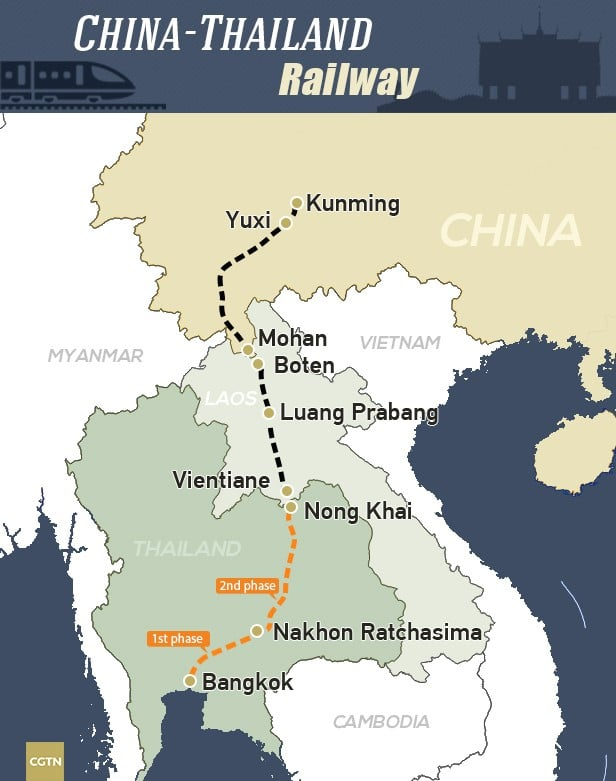Font size:
Print
India and China’s Infrastructure Investments
Building Corridors of Influence: India’s and China’s Infrastructure Initiatives in Myanmar and Thailand
Context: Southeast Asia, bridging the Indian and Pacific Oceans, is a hub for trade routes and economic growth.
More on News
- India and China are leveraging infrastructure investments in Myanmar and Thailand to advance their strategic and economic goals.
- China’s Belt and Road Initiative (BRI) and India’s Act East Policy, including projects like the India-Myanmar-Thailand Trilateral Highway (IMT-TH) and Kaladan Multimodal Transit Transport Project (KMMTTP), are reshaping the region’s geopolitical dynamics.

Political and Economic Impacts of Infrastructure
- Importance: Road networks are vital for trade, disaster resilience, and economic inclusion, connecting urban and rural areas.
- Geopolitical Weight: Transnational infrastructure projects, like those led by India and China, also carry geopolitical weight, fostering regional alliances and influencing global relations.
- Challenges: These initiatives create jobs, boost local economies, and enhance connectivity but face challenges like political instability and environmental concerns.
China’s Belt and Road Initiative (BRI)
China’s BRI aims to integrate Southeast Asia with its economy through roads, railways, and ports:
- Myanmar: In Myanmar, projects like the China-Myanmar Economic Corridor (CMEC) and Kyaukphyu port are central, with Chinese investments exceeding $25 billion from 1988 to 2019.
- However, public opposition, environmental concerns, and post-2021 coup instability have stalled progress.
- China has adapted by engaging ethnic armed organisations (EAOs) and the military junta to secure projects.
- Thailand: In Thailand, the Bangkok-Nong Khai High-Speed Rail (HSR) is a flagship BRI project, set for completion by 2030.
- Thailand’s Eastern Economic Corridor (EEC) also attracts Chinese investment in rail, ports, and airports, though concerns over land acquisitions and local business marginalisation persist.
- Thailand balances Chinese influence with ties to the US, Japan, and others to maintain sovereignty.

India’s Act East Policy
India’s infrastructure projects, driven by the Act East Policy, focus on sustainable development and regional connectivity.
- Myanmar: In Myanmar, the KMMTTP and IMT-TH aim to connect India’s Northeast to Southeast Asia, fostering trade and stability.
- However, delays due to rugged terrain, security issues, and Myanmar’s 2021 coup have hindered progress.
- The operationalisation of Sittwe Port in 2023 is a milestone, though ongoing conflicts disrupt further development.
- Thailand: In Thailand, the IMT-TH strengthens economic and cultural ties, positioning Thailand as a gateway for India’s ASEAN engagement.
- Despite progress, delays in Myanmar’s segments, such as the Tamu–Kyigone–Kalewa road, highlight implementation challenges.
ASEAN’s Role in Regional Connectivity
ASEAN is pivotal for both nations:
- India: India deepened ties through dialogue partnerships since 1992, with trade reaching $131.5 billion in 2022-23.
- Sub-regional initiatives like BIMSTEC and Mekong-Ganga Cooperation enhance India’s engagement with Myanmar and Thailand.
- China: China, ASEAN’s largest trading partner since 2009 ($722 billion in 2022), aligns BRI with ASEAN’s connectivity plans, strengthening economic ties through the ASEAN-China Free Trade Area (ACFTA).
Challenges: Political Instability and Environmental Concerns
- Myanmar’s ongoing conflict, intensified by the 2021 coup and Operation 1027, disrupts both Chinese and Indian projects.
- China’s CMEC faces security risks, prompting a shift toward militarised security measures, raising concerns about regional stability.
- India, adopting a mediator role, engages EAOs and the National Unity Government (NUG) to safeguard its investments.
- Environmental issues also loom large. Chinese projects like the Myitsone Dam in Myanmar and Mekong River dams in Thailand face backlash for ecological damage.
- India’s smaller-scale projects, like KMMTTP, encounter criticism for inadequate environmental assessments but are generally seen as less intrusive.
Opportunities for Sustainable Development
- India’s demand-driven, people-centric approach contrasts with China’s loan-heavy model, offering a sustainable alternative.
- India’s $1.76 billion in Lines of Credit and Quick Impact Projects in Myanmar and Thailand focus on infrastructure, education, and disaster management.
- To compete with China, India must streamline project execution and establish robust monitoring mechanisms.
- China is adapting with greener BRI projects, such as solar farms, to address environmental concerns and align with global sustainability goals.
- Collaborative efforts with ASEAN, Japan, and the US can ensure equitable development, balancing economic growth with environmental and social considerations.
India and China’s infrastructure investments in Myanmar and Thailand are reshaping Southeast Asia’s economic and geopolitical landscape. Public perception, political stability, and environmental sustainability will determine the success of these initiatives. Collaborative, transparent, and inclusive approaches are key to fostering regional stability and equitable growth.


